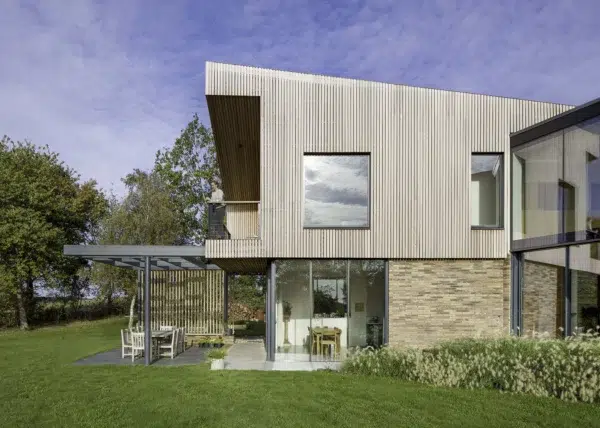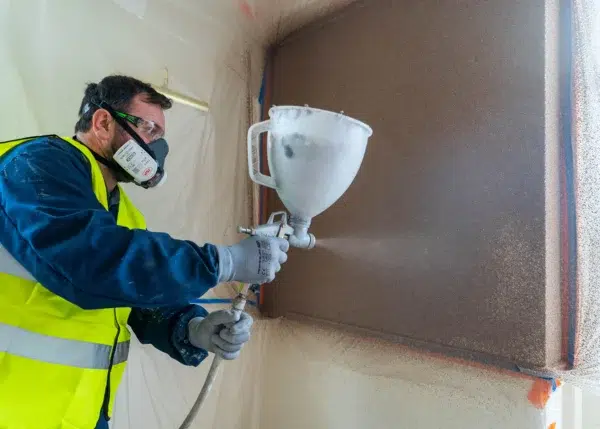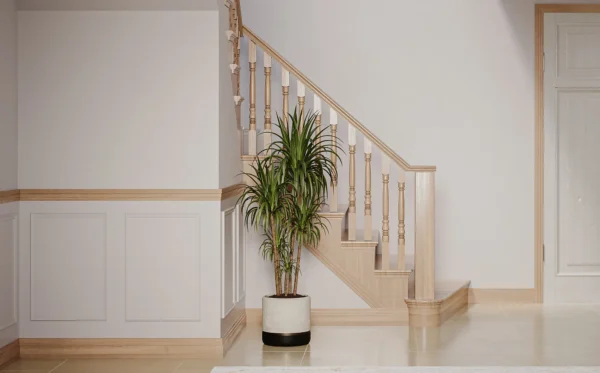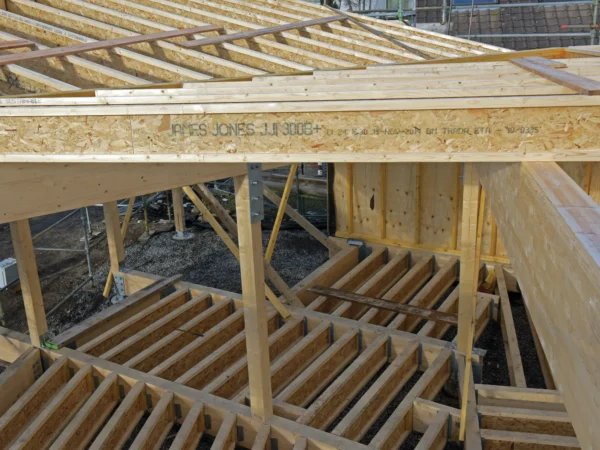Your Guide to the Different Bathroom Flooring Options, Plus Great Project Ideas
From the floor up, every element of your bathroom design should be carefully considered to create a space that feels both functional and like a true sanctuary. The type of flooring you choose plays a key role in setting the tone and atmosphere, shaping the room’s feel and functionality. While there’s plenty of room for creativity in your floor selection, it’s equally important to weigh the factors that affect both comfort and aesthetics in your bathroom renovation or self build. So, which bathroom flooring option will best suit your project goals and design preferences?
Here, I’m looking at the pros, cons and costs of the different bathroom flooring solutions. Jump to:
- Timber floors
- Cement tiles
- Vinyl
- Porcelain & ceramic
- Polished concrete
- Laminate
- Bathroom flooring FAQs
Wood floors
With its strong associations to warmth and charm, few materials rival the timeless appeal of wood flooring. Whether you want to introduce a rustic character or elevate a modern interior, timber remains a staple choice for its unmatched versatility.
Pros
Wood flooring is an excellent choice for any room, including bathrooms, despite the common misconception that it is unsuitable for rooms where water and humidity are frequently present.
As long as the right type of wood flooring is chosen ‒ and care is taken to avoid standing water and good ventilation is maintained ‒ it can look fantastic in a bathroom. Oil finishes sink deep into the grain to protect the timber from within, while lacquer finishes form a hard, durable seal on the surface ‒ both offering effective resistance against moisture and spills.
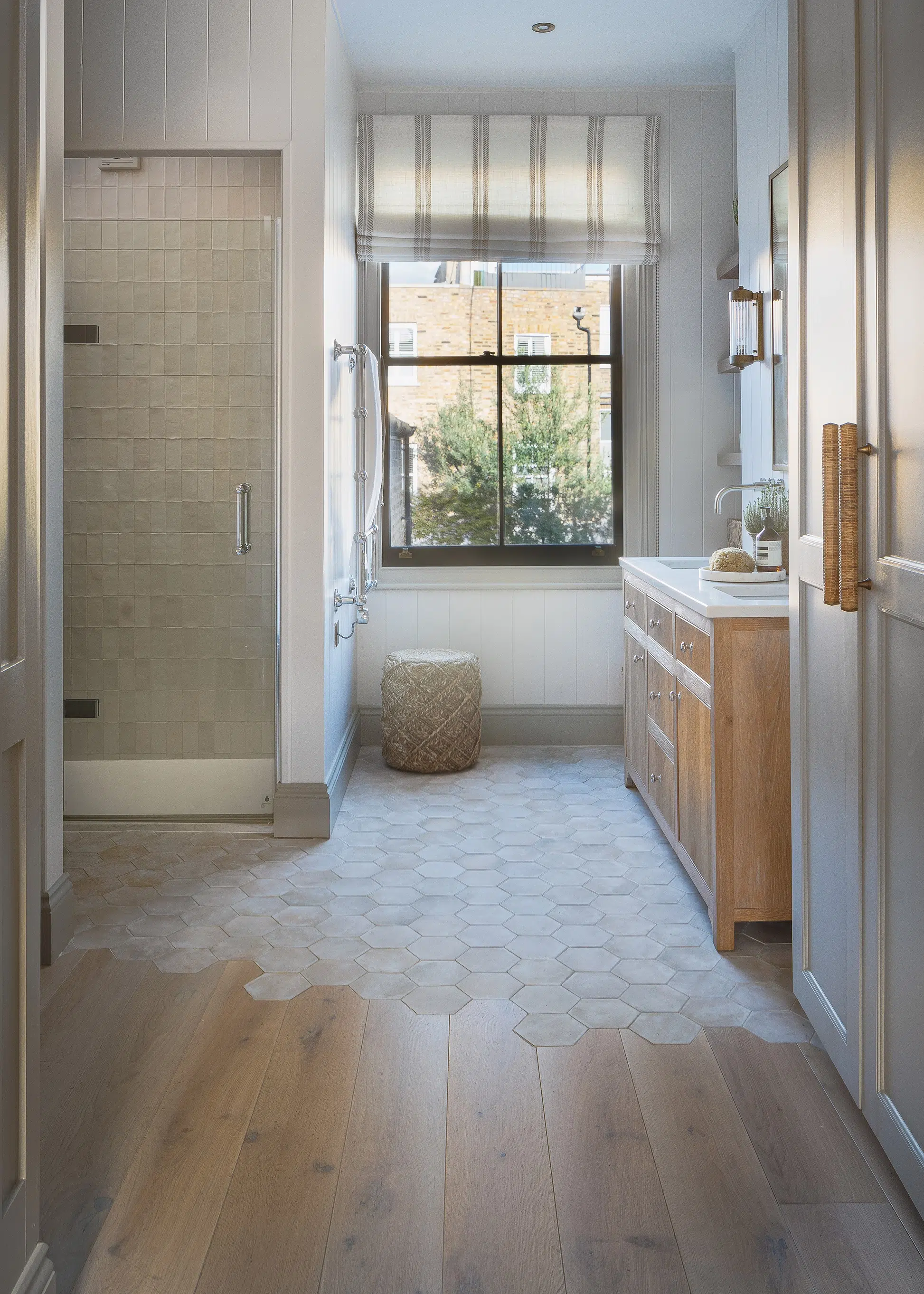
This bathroom, designed by House Nine Design, features Chaunceys Timber Flooring’s 180mm wide, character grade Bristol Tectonic oak planks with a Dry Biscuit finish. Tile transition details create a seamless transition between the bedroom and bathroom zones. Photo: Robin Quarrelle
Cons
Engineered wood flooring can be used in bathrooms but it’s not suitable for wet rooms, where there’s little control over how much water lands on the surface or how long it remains there. “I would strongly advise against using solid wood flooring in bathrooms as it will soon distort due to the high humidity levels,” says Ian Tomlinson, managing director of Chaunceys Timber Flooring.
High-quality engineered boards, however, are designed to be far more stable and resistant to environmental changes. As they are manufactured using advanced techniques, they can be installed in a range of settings ‒ including over underfloor heating (UFH) systems and in bathrooms. Wood is also a natural insulator, so underfloor heating may need to be set slightly higher than it would beneath stone, concrete or porcelain tiles to achieve the same warmth.
Costs
While it is possible to find cheap materials easily online, with wood, it’s a case of you generally get what you pay for. “Budget options will use cheap manufacturing processes and materials, which can lead to failure,” says Ian. Wood bathroom flooring starts at around £50m². These boards typically have narrower widths, shorter lengths and less depth.
For quality wood flooring, prices can range from £80m² to £250m², however, these will be much more substantial planks. The high-end market, rising past the £500m² mark, caters to very long and wide planks with bespoke detailing.
Encaustic cement tiles
Encaustic cement tiles are celebrated for their artistry and craftsmanship, bringing colour, individuality and character to a space.
Pros
Handmade using mineral pigments and cement, each tile produces a softly variegated surface and velvety depth of colour that adds undeniable charm and warmth to a space. “They’re extremely durable when sealed correctly, making them ideal for high-traffic areas such as hallways, kitchens, and bathrooms ‒ even outdoors,” says Damla Turgut, founder and creative director of Otto Tiles.
Should they become stained or marked over time, they can be professionally sanded to restore their original depth of colour and smooth finish. Because premium tiles have a thicker layer of pigment, their patterns remain defined even after the restoration process. “They can last for decades when properly maintained, and their ability to be refinished gives them longevity beyond most manufactured alternatives,” says Damla.
Due to their natural materials, low energy production process and durability, encaustic cement is considered a sustainable material, making it a reliable option for long-term use. They’re also excellent conductors of heat and pair well with underfloor heating.
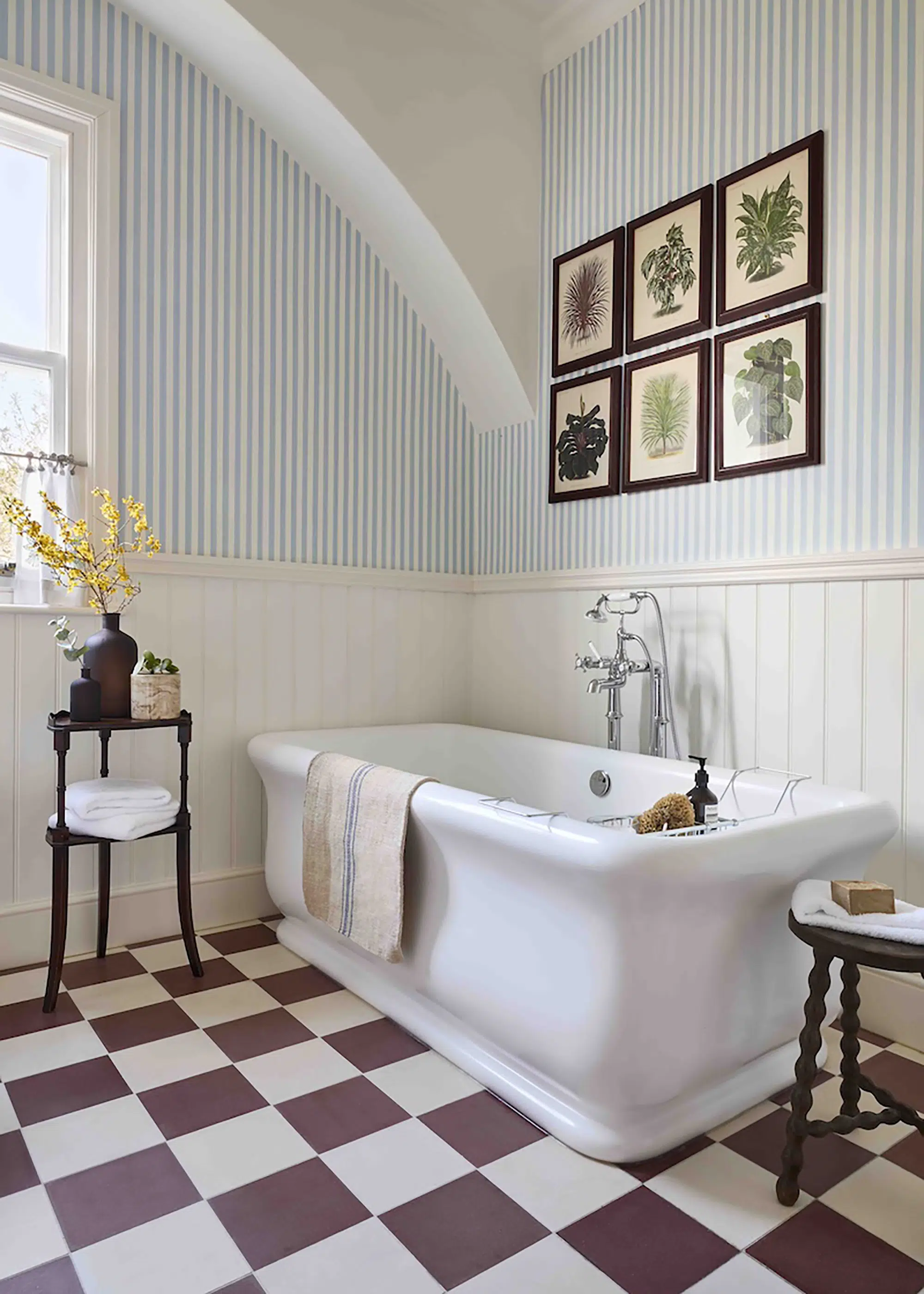
This bathroom floor features a beautiful mix of Aubergine and Dirty White encaustic cement tiles from Otto Tiles, creating a striking pattern that brings both character and charm to the space. Prices start at £110 per m²
Cons
Cement tiles are porous by nature and require a meticulous installation process to prevent staining and water damage over time – this is especially important in a bathroom space. To maintain their finish, they need to be sealed before and after being fitted in a bathroom, and resealed periodically, usually once a year.
Over time, it is possible for a natural patina to develop on the surface of the tiles, which some homeowners love, and others may find less uniform. “As they’re handmade, slight variations in tone and pattern, occasionally depth, are normal and part of their charm, but they do require a skilled installer for a flawless finish,” says Damla. They’re also heavy, so that needs to be considered when you plan to use them, especially on weak walls or floors.
Costs
Prices for cement tiles start from around £135 per m². “It is important to note that cement tiles are a premium product and more labour intensive to install than porcelain or ceramic as sealing and alignment take time and expertise,” says Damla. However, their durability and lasting appearance are key considerations for long-term use.
Vinyl flooring
For decades, the most luxurious bathrooms have featured expansive slabs of stone gracing walls and floors. When it comes to wet environments, however, it may not be the most practical – or viable – choice for many homeowners. Vinyl tiles offer a solution for those looking for a luxury feel without the upkeep of natural materials.
Pros
Luxury vinyl tiles can provide the beauty of wood or stone without the heavy price tag or maintenance concerns of its natural counterparts. “While marble is undeniably beautiful, it isn’t always the most practical – or affordable – choice. That’s where marble-inspired luxury vinyl flooring comes in,” says Claire Ryan, PR and digital manager at Karndean Design Flooring.
Durable, waterproof and easy to clean, vinyl is designed for rooms that see daily humidity. It won’t warp of swell over time, and a different stone-effect designs offers a luxurious feel without the chill or toughness of real stone. Simple glue-down or click-lock options also make it an adaptable choice for those looking to save on professional installation, and pairs wonderfully with underfloor heating.
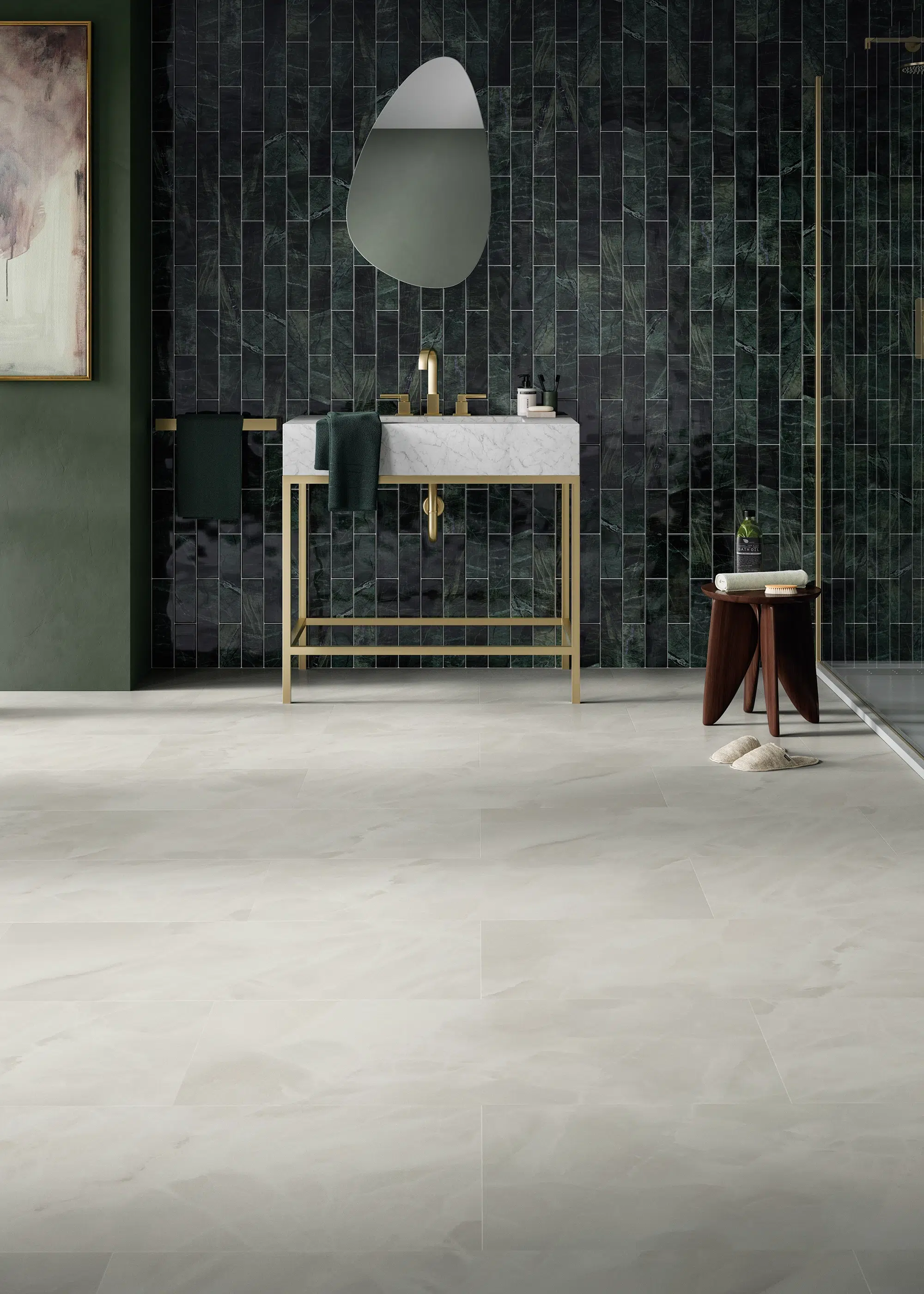
With its soft, romantic tones and delicate luminosity, Karndean’s Pearl Onyx flooring brings a serene, spa-like atmosphere into a bathroom. Prices start from £62.49 per m²
Cons
While vinyl is a tough material, it can be prone to scratches or dents if heavy furniture is dragged across the floor without protectors. “Buying cheap, poor-quality tiles can lead to disappointment, and skipping proper subfloor preparation can cause bumps or uneven spots that show over time,” says Claire.
In a bathroom, where steam, splashes and moisture are routine, ensuring you have a proper base is especially important. Vinyl is also not regarded as a sustainable material as it is made from synthetic plastics and has larger environmental impact than other types of flooring. That said, high-quality tiles can last well and offer great durability when installed properly.
Thinner and simpler vinyl designs will start at around £14 per m². “These products could compromise on durability, texture and finish, leading to disappointment when they don’t stand the test of time,” says Claire. Mid-range tiles can cost between £25 per m², and premium options from £45 per m², which deliver enhanced scratch resistance, realistic textures and occasionally come with a lifetime warranty.
CASE STUDY Bathroom renovation with striking glazed clay tilesThis Victorian house renovation makes use of a playful and artistic colour palette. Architects Edward Couper and Lumin Architects worked closely with the owners, Blu Reynolds and his partner Corey, to deliver a bold yet sophisticated bathroom renovation, injecting the space with vibrant tones using Claybrook Studio’s verdant-hued Fellina Pianta Gloss tiles. The green tiles have been paired with a lighter colour from the same range, creating a distinctive candy-striped effect that extends from the floor to the walls. The choice of glazed clay brings a natural, rustic charm to the space while offering a low-maintenance surface that resists stain and moisture for added practicality. By keeping the bathroom fixtures and furnishings understated, the bathroom floor becomes the focal point, striking a balance between comfort, practicality and design. |
Porcelain & ceramic tiles
Low-maintenance, waterproof and providing a sense of luxury without the complications of natural stone, porcelain and ceramic are popular choices when it comes to specifying bathroom flooring. However, it’s important to understand the key differences between the two. Porcelain is a denser material, fired at higher temperatures for longer periods, which makes it more durable and less prone to chipping or cracking than ceramic. On the other hand, ceramic is easier to cut during installation, offering greater flexibility for complex layouts.
Pros
Both porcelain and ceramic tiles come in a wide range of styles, colours and finishes ‒many of which beautifully replicate natural materials like wood or stone. They’re also among the most low-maintenance flooring options available, as they don’t require resealing. Waterproof, slip-resistant and compatible with underfloor heating, they both make practical yet stylish bathroom flooring options. Just be sure to consider the tile finish, as this can affect both appearance and performance. “Matt is the most robust option as it won’t stain, scratch or discolour over time,” says Jo Oliver-Singh, director at Stone & Ceramic Warehouse.

This ornate design from Lapicida replicates the look of Italian white marble slabs, with gold and grey veining. Prices start from £40-£60 per m²
Cons
As porcelain is a denser material that’s fired for longer at a higher temperature, it can be more hardwearing and less likely than ceramic to chip or crack. However, that does mean the latter is easier to cut during installation. “Polished surfaces can incur fine, unwanted scratches over time,” says Jo. Both materials are also hard to install and heavy, so they may not be suitable for upper storey bathrooms. And, like stone, they are incredibly hard and cold underfoot, which may mean compromising on comfort.
Costs
Prices can vary with porcelain and ceramic tiles, with so many different sizes and finishes on the market. “Our starting point for an entry-level high-quality porcelain tile is around £40 per m². Depending on the graphics, type of porcelain and tile size, prices can go all the way into the £100s per m².”
Polished concrete flooring
Polished concrete is a popular bathroom flooring option, complementing both contemporary and traditional interiors. With its sleek finish and subtle texture, it can bring a modern twist to a space, while remaining practical, hardwearing and easy to maintain.
Pros
Originally valued for its low-maintenance and practical nature, it has since become a stylish way to update period homes or enhance modern spaces. With its smooth, seamless surface and minimal grout lines, polished concrete can make smaller bathrooms feel more spacious while maintaining a high-end finish.
Most polished concrete floors are treated to create a non-slip surface that remains comfortable underfoot, even when wet. It’s also stain-resistant (when sealed properly), easy to clean and works exceptionally well with underfloor heating, as concrete has a high thermal mass and so retains heat steadily over time.

Build It readers Stephen and Laura used polished concrete flooring throughout their ground-floor extension and renovation. Photo: David Butler
Cons
Polished concrete floors are generally best suited to bathrooms in self builds or ground-floor extensions, where the substructure can be designed to support its considerable weight and ensure a level pour. The installation process is also lengthy, as freshly poured concrete must cure for at least 28 days before it can be polished. During colder months, it can feel cool underfoot, but will absorb and hold onto heat from the sun or underfloor heating.
Costs
Typical installation costs for polished concrete range from £130-£160 per m², placing them in a similar price bracket to high-end stone tiles. Unlike natural stone, you won’t need to factor in the additional cost of screeding if starting from scratch. If your bathroom already has a concrete subfloor, it can be sanded and polished to achieve a finished concrete look for around £50 per m², making it a more affordable way to achieve a high-end effect.
Laminate flooring
Like vinyl, laminate is a great bathroom flooring option for those looking to capture the appearance and feel of wood or stone floors without the price tag and maintenance that come with natural materials. Today’s laminates offer remarkably realistic textures and finishes, making them a stylish yet practical option for modern bathrooms.
Pros
Offering the beauty of natural materials in an easy-to-maintain format, laminate flooring can be smart bathroom flooring choice for those seeking style and practicality on a budget. “Thanks to advancements in technology, there’s now a wider choice of high-quality laminate options available that are durable, low maintenance and budget-friendly,” says Alex Heslop, trend expert at Flooring Superstore. It’s highly resistant to scratches, dents and stains ‒ making it a smart choice for busy family bathrooms.

Flooring Superstore’s EvoCore Portland Stone Square Tile has a matt grey finish for a luxurious look and feel. £69.99 per m²
Cons
Laminate is a versatile flooring option suitable for most areas of the home, but it’s important to note that many products are only water-resistant, not fully waterproof. Prolonged exposure to moisture or large spills can cause swelling and long-term damage, reducing the floor’s lifespan.
For bathrooms, it’s best to choose a specialist waterproof laminate or consider an alternative material designed for wet environments. Additionally, laminate isn’t always the best match for underfloor heating, as excessive or uneven heat can cause the boards to expand or warp over time.
Costs
With costs ranging between £10-£30 per m², laminate flooring is considered an affordable choice, with premium options providing wood or stone textures and added durability. For bathrooms, you’ll need to specify a waterproof solution, which could add costs.
“Don’t forget to factor in additional costs for levelling your sub-floor, underlay, trims and installation, which will bring costs up to around the £40-£50 per m² mark,” says Alex.
Bathroom flooring FAQs
When does a darker or lighter floor work best & what are the advantages of each?
Lighter bathroom floors help open up the space by bouncing light around to create a fresh, airy feel – perfect for smaller spaces or those with little natural light. Pale tones beautifully complement white tiles or soft neutrals, offering that clean, spa-like look and cleverly reducing the appearance of dust or water spots.
On the other hand, darker floors add depth and drama, creating a cosy, cocooning feel. Paired with brass fittings or bold wall colours, dark bathroom floors can look particularly striking and create a rich, sophisticated atmosphere. Ultimately, the right choice will depend on the size, lighting levels and mood of your bathroom ‒ both options can look stunning when thoughtfully styled.
How can the type of bathroom flooring I specify help make the bathroom space look bigger?
Choosing the right flooring can drastically impact how spacious a room can appear. Large-format planks or tiles with minimal grout lines create a seamless look that visually expands the surface area of your bathroom. Laying planks lengthways or on the diagonal draws the eye across the room, enhancing flow. Bright, reflective finishes – such as pale woods or soft stones – encourages the flow of light, making the room feel more open.
Extending the same flooring into adjoining areas creates uninterrupted sight lines that allows even compact bathrooms to feel larger and cohesive. Geometric or abstract patterned tiles can also feel transformative in smaller spaces by drawing the eye towards a striking feature rather than focusing on the room’s size.
Which bathroom flooring option pairs works best with underfloor heating?
When choosing a bathroom floor to pair with underfloor heating, focus on materials that conduct heat efficiently and remain stable with temperature changes. Stone, porcelain, cement and terrazzo are excellent options as they transfer warmth evenly and retain heat well. Timber and vinyl can also work but require the correct backing and adhesives to prevent warping. Always ensure the subfloor is level, dry and insulated, and that flexible adhesive and grout are used to accommodate minor movement.
Can I install my bathroom floor myself?
Some flooring types, such as click-in vinyl or laminate, can be suitable for confident DIYers, but most bathroom floors benefit from professional installation – especially if underfloor heating is involved. Tiles made from stone, porcelain or cement require precision levelling, sealing and grouting to prevent future issues with moisture or cracking. Bathrooms are high-humidity spaces, so proper preparation of the subfloor and use of waterproof membranes and the right adhesives is key. Hiring a professional ensures long-term performance, a watertight finish and the best visual result ‒particularly for patterned or natural materials.






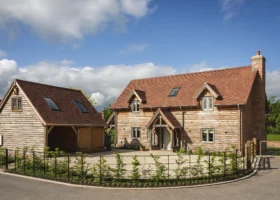


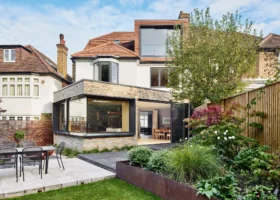
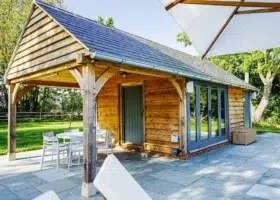
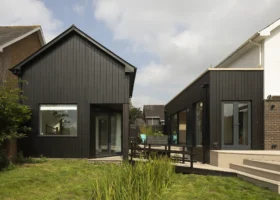
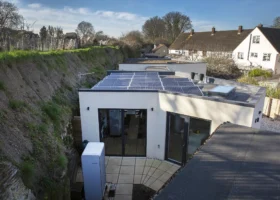


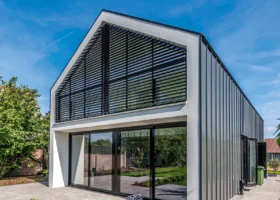

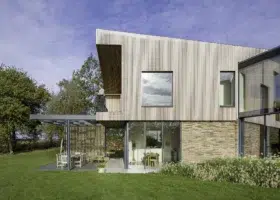
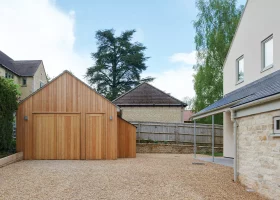
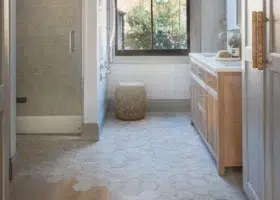

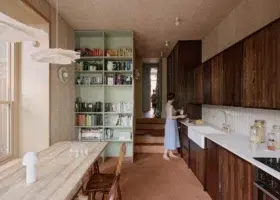
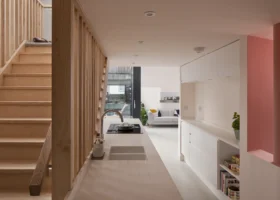
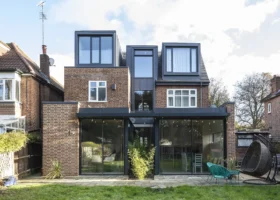
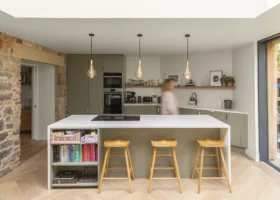

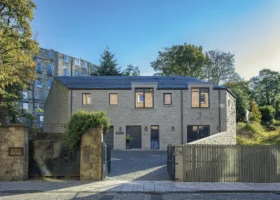
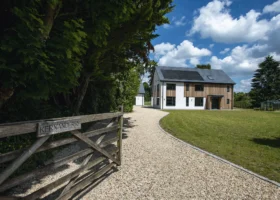

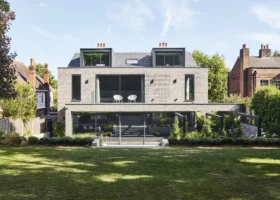
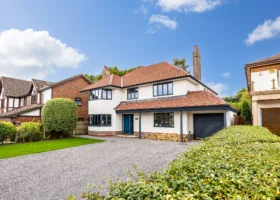

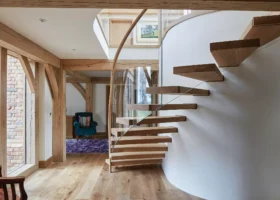





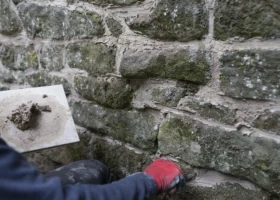

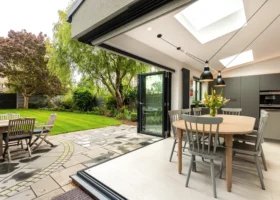
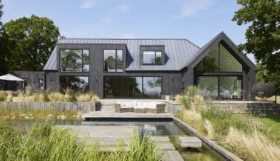
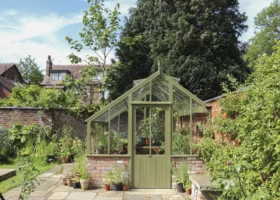
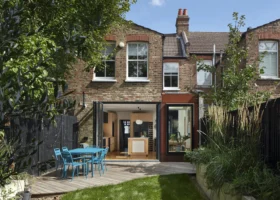
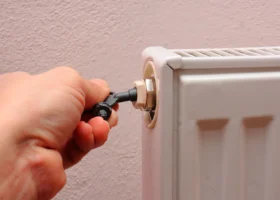
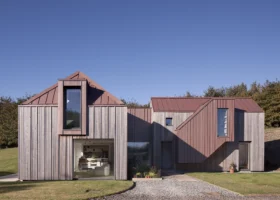
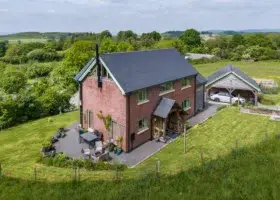

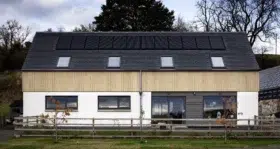



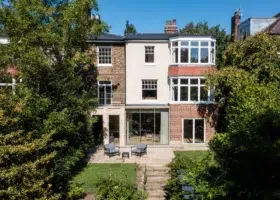

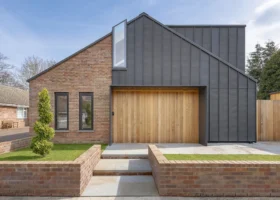
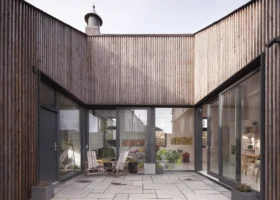
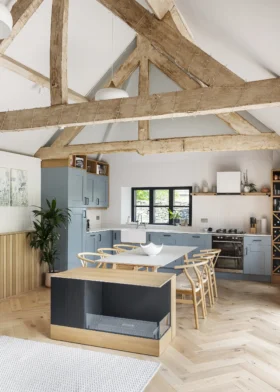
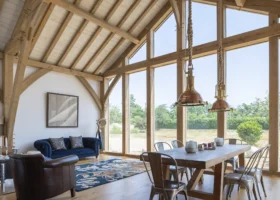
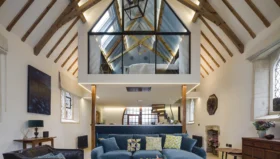
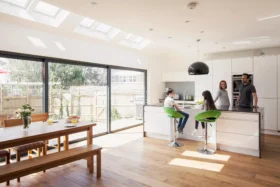
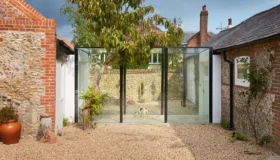
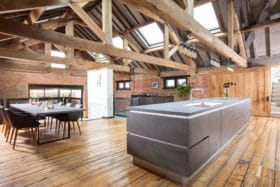
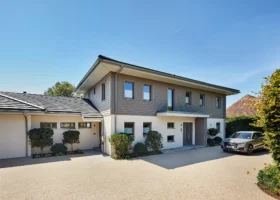

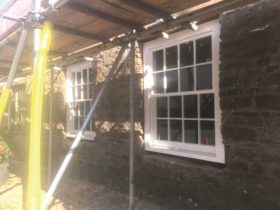





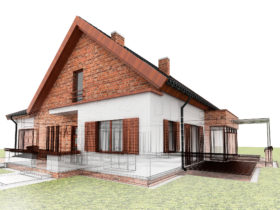











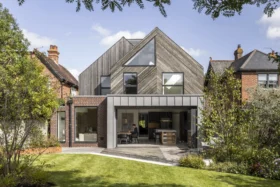




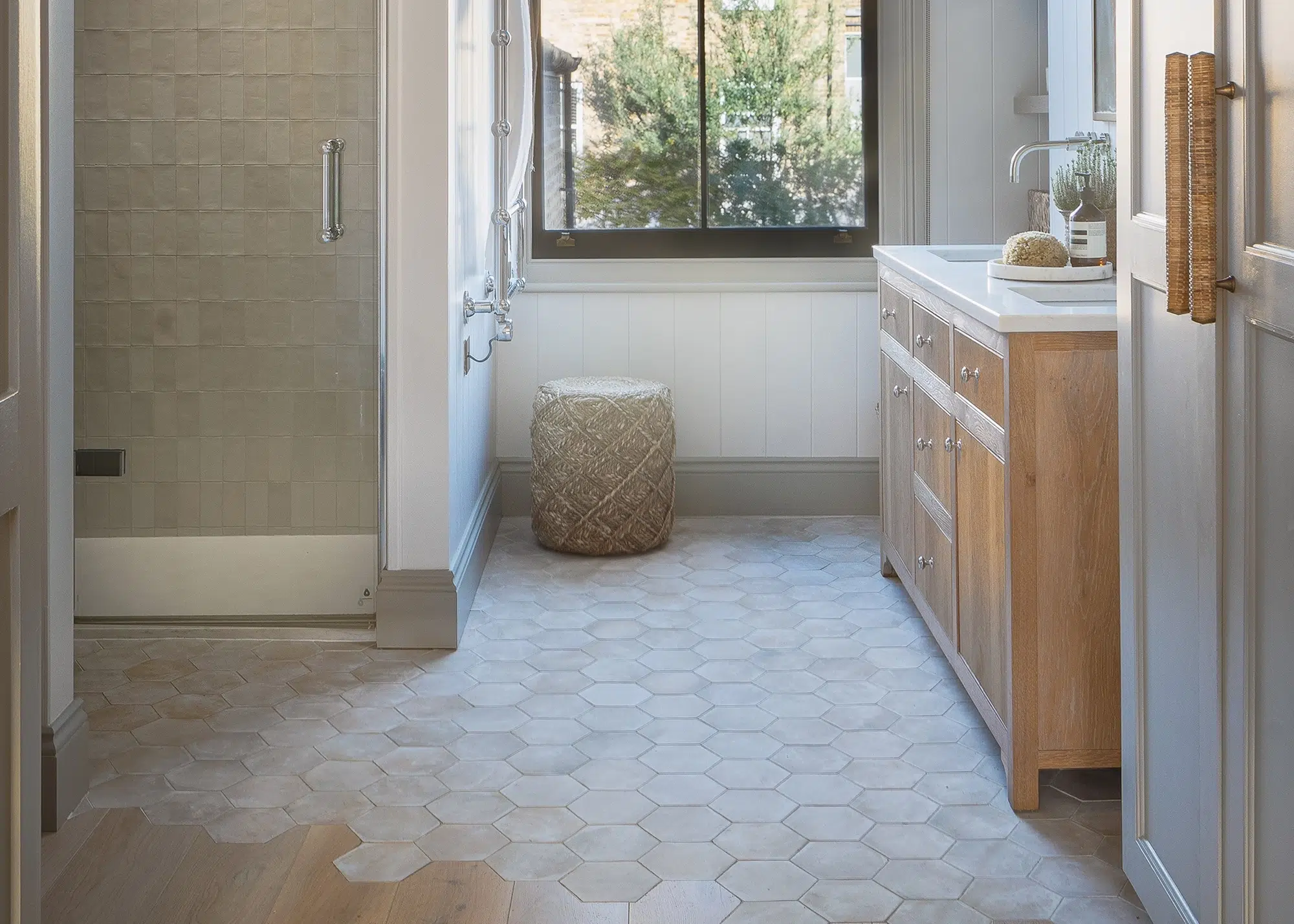
 Login/register to save Article for later
Login/register to save Article for later




